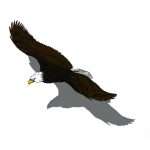By Kelly Defaye, Visitor Information Coordinator, Rio Grande National Forest.
To set the scene, I’ve been working at the ranger station for about six to eight months. I’ve been through spring’s mud season, summer’s recreation season, and am now experiencing the hunting and woodcutting season.
I play a game when someone pulls up to the office, trying to guess why they’ve stopped by. Sometimes they make it easy when they stop by early in the day with an empty trailer or stake truck bed and a chainsaw.
The phone calls are usually more varied, although many times the underlying question is, “How long until I can’t get into the forest?” On this particular day, the first phone call was a little more unusual. “We’re going to be visiting the Rio Grande National Forest in late December, what can we do?”
I’ll admit, the question stumped me for a moment. What could they do? Keep in mind, I’ve spent my summer telling people about hiking and OHV trails, all of which will be covered in snow by late December. And apparently, I spend most of my time in the forest doing summer things, because winter recreation ideas weren’t occurring to me.
“Umm, I guess you could snowshoe or cross-country ski…” and then the ideas started flowing; There’s a pretty good ski area in the forest, ice-fishing, sledding, maybe you could find someone who rents out snowmobiles or does tours. And an old mountain man taught me how to build snow caves when I was kid, which I’ve heard make comfortable camping shelters, although I’ve never slept in one.
If that old timer were around today, he’d probably tell me that just because there’s snow on the ground doesn’t mean you can’t get out and enjoy the outdoors.
Like hiking? Throw on some snowshoes. OHV riding? Snowmobiles are a great option. Camping? There are some cold-weather options.
Fishing? All you’ve got to do is cut a hole in the ice.
Of course, that same old timer had a lot of experience with high mountain winters. He’d be the first to warn you of how dangerous winter in the mountains can really be, and he had some pretty harrowing stories to illustrate his point.
Take all the hazards of mountains in the summertime—like altitude sickness, abrupt weather changes, exhaustion, and disorientation—and add in winter specialties like hypothermia, tree wells, and avalanche danger, and the mountains in the winter can be treacherous.
So, if we’re going to enjoy the mountains in the winter, we’re going to need to prepare ourselves. In addition to the necessary gear to be safe in the mountains in the summer, be sure to have warm layers, proper foot gear including snowshoes and crampons, and emergency equipment such as a shovel and avalanche gear, plus any specialized equipment you’ll need for your particular activity.
It’s important to prepare in other ways, too. Know where you’re going and tell someone else. Have a map and compass and know how to use them—sometimes our beloved technology fails. Check the weather and the avalanche conditions before you go, and be aware that conditions can change quickly, so don’t hesitate to turn around if the weather changes or you come across some dangerous-looking snow conditions. Know what dangerous snow conditions look like. And know what to do when things go wrong. That old mountain man wasn’t teaching me how to build a snow cave just because it was fun, he was teaching me survival skills that may have saved his life at some point in the past and may save mine sometime in the future.
My old friend loved the mountains, and because he was careful and used his knowledge and experience, he enjoyed being out in the mountains all his considerably long lifetime. I hope we all take a page from his lengthy book and enjoy the beautiful Rio Grande National Forest all year round.
For avalanche conditions please check with the Colorado Avalanche Information Center (CAIC) at: www.avalanche.state.co.us.
Kelly Defaye is the San Juan Mountains Association’s visitor information coordinator for the Rio Grande National Forest. Having grown up in the San Luis Valley, she has always considered the surrounding mountains her happy place.


